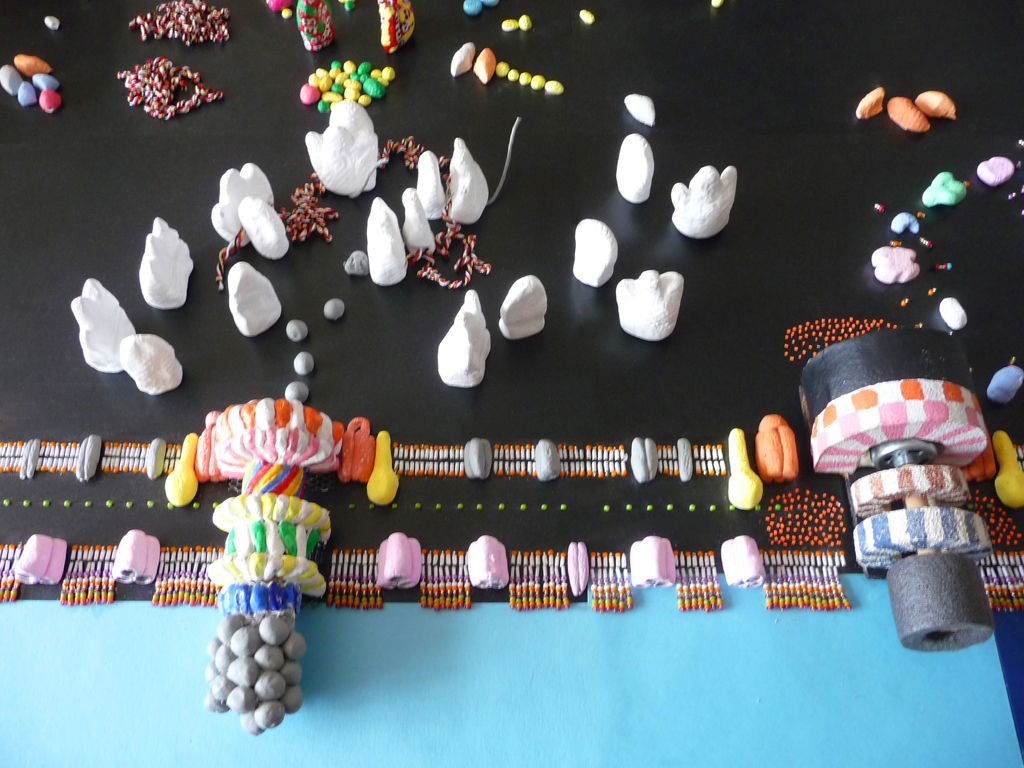View the E.coli Model
The content on this page is from Henry’s website as it existed between 2011 and his death.
1.
The E.coli cell with introductory panel (explanation board) at level of public understanding.
2.
The same as previous with metabolism panels more magnified.
3.
Uptake of glucose from aerated nutrient, glycolysis, pentose phosphate pathway. Krebs Cycle, extraction and transport of electrons, electron transport chain in cell wall, proton motive force, porins, syntheses of twenty amino acids and two polyamines.
4.
The same as previous with protein synthesis in the background.
5.
Cell wall, proton motive force driving the ATPase enzyme to regenerate ATP. Synthesis of ATP and other ribonucleotides from precursor molecules. Second copy of glycolysis enzymes. Uptake of lactose, synthesis and breakdown of glycogen.
6.
DNA of nucleoid and plasmid. AB5 toxins and O-157 antigens. Wall component syntheses: IPP & bactoprenol, murein, phospholipid. Enterobacterial common antigens. Septation initiation.
7.
Bayer’s junction, wall component syntheses and positioning: Lipid A, ABC transporter, enterobacterial common antigen, Braun’s lipoprotein, protein secretory system.
8.
Flagellar motors: immature motor with flagellin synthesis by ribosomal production line; mature motor with flagellum cut off at base and proton motive force indicated.
9.
Ribosome synthesis: Centre – small and large completed subunits. Clockwise around these from left: RNA contribution, proteins derived from Operons 1,2,3,4,5,6, proteins derived from Operons 7-19 (after Keener & Nomura, 1996). Outer circle from left: RNA polymerase and components, distal ends of Operons 1-6. Operons 7-19 are assumed to be out of sight elsewhere in the model and are not shown: all 19 operons would hopelessly crowd the available space.
10.
At top, Operons 3-6 with attendant ribosomes. Glucose uptake from oxygen-free solution. Third copy of glycolysis enzymes. Mixed acid fermentation.
Related pages:
Life at 2 Million Magnification
E.coli Model
60x40cm Models
[Return to top of page.]
[Return to main Models page.]










